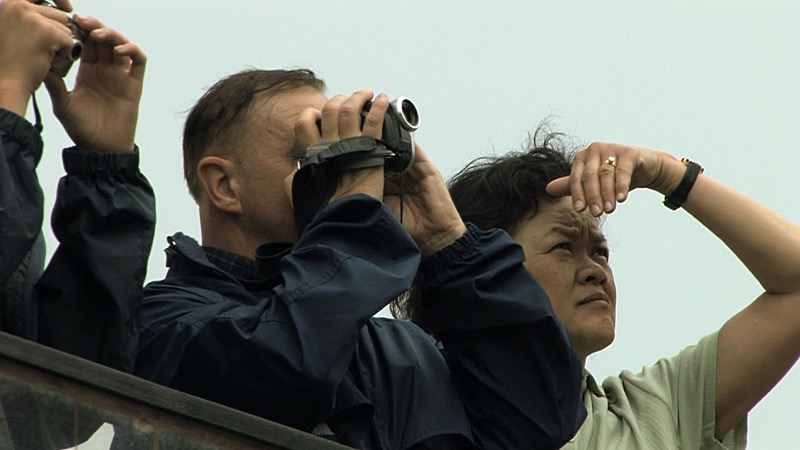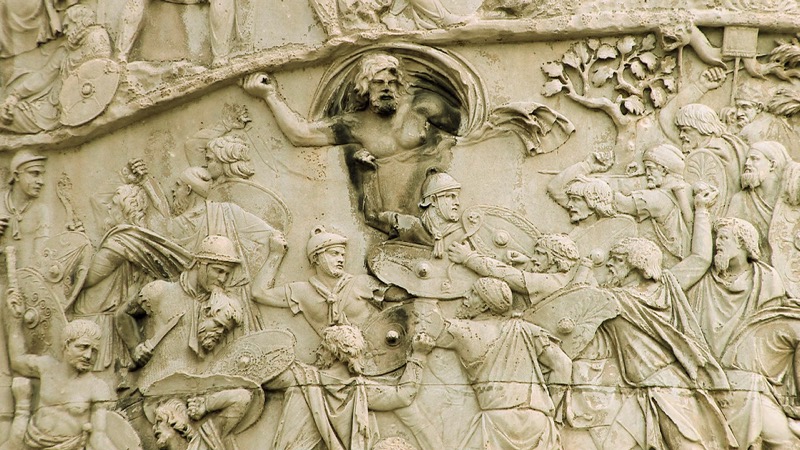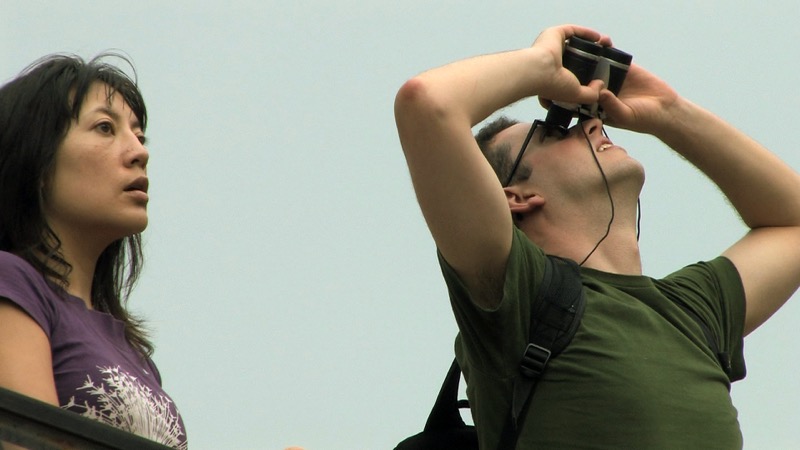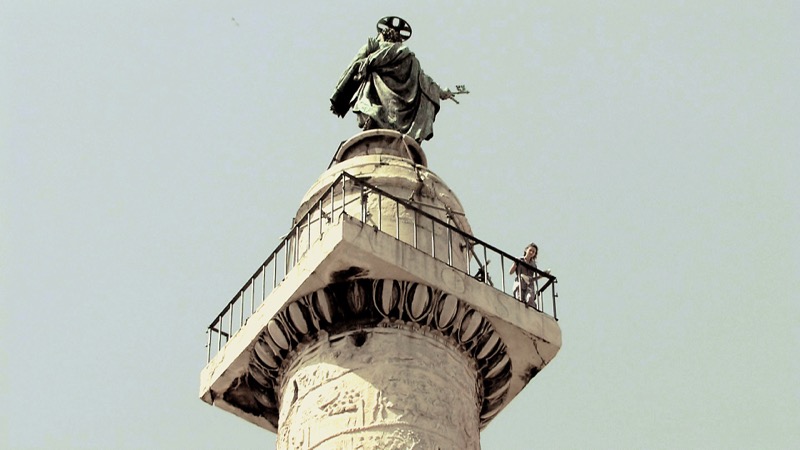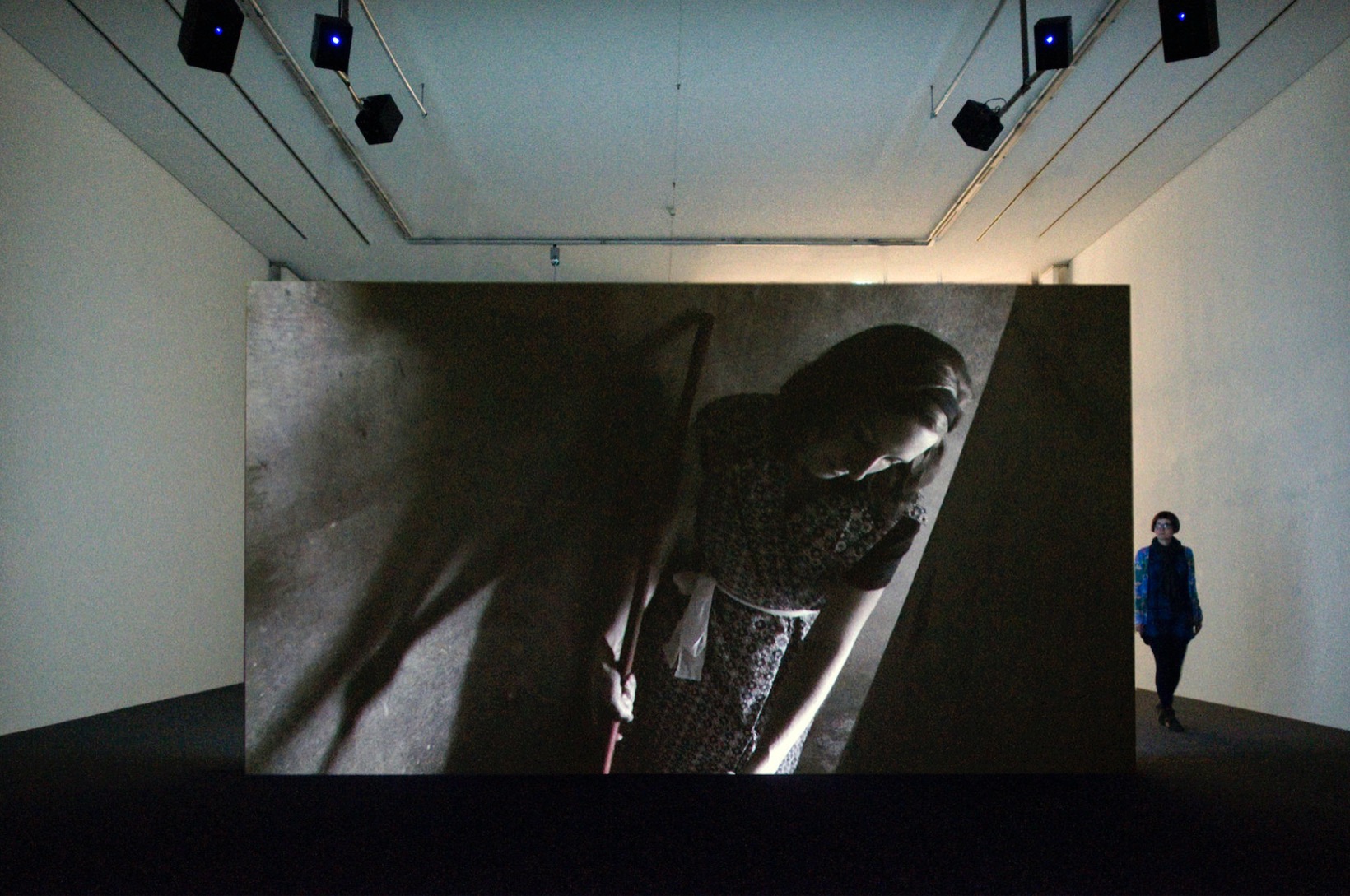
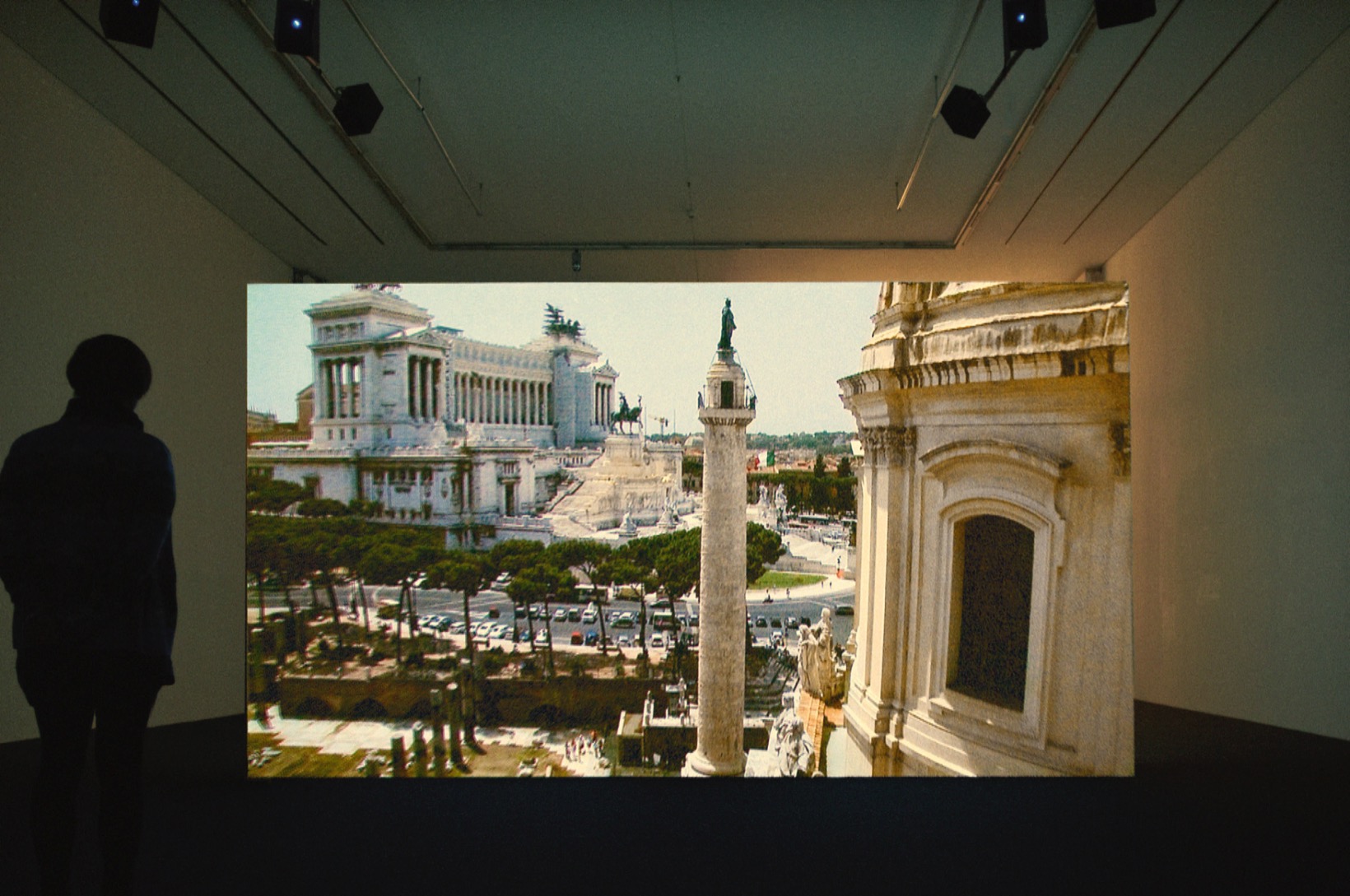
Cento Piedi
Two-channel video installation, 2012, 7 min. 4 sec., 16:9, / Language: multilingual video with English subtitles
Cento Piedi / One hundred Steps
The Trajectories of Identity and What Lies Beyond Them.
by MAGDA RADU
" (...). The evocation of a myth of identity with profound implications for the current situation also occurs in the Cento Piedi project. The presentation of this video installation is conceived symmetrically: on either side of a projection screen, the film’s two complementary facets are shown. Aurelia Mihai filmed the material in Rome. The recto / verso projection corresponds with the interior / exterior binary; namely, film shot inside and outside Trajan’s Column, which is a central element of the work. Entering the exhibition space, the visitor steps into one of the two perimeters of the video installation, and is unable to watch both projections simultaneously. The change in the viewer’s position in space (in order to view the other side of the screen) corresponds with the shifting viewpoint of the film’s content, which is conceived according to a dual schema. Thus, one facet of the installation presents to us the image of a young woman as she proceeds up the spiral staircase inside Trajan’s Column in the Roman Forum, washing the steps. The extremely narrow space inside the column — inaccessible and unknown to visitors to the Forum — means the camera has to be positioned in close proximity to the woman, and the repetitive task she carries out becomes even more present as a result of the noise this physical work creates in the background.
Physical work is an activity that has been intensely discussed by current critical theory, which analyses the metamorphoses of labour in contempo - rary society, with one of the most widely circulating ideas being that “in the social space of the developed countries, physical labour is invisible.” Aurelia Mihai’s film highlights this shift, making visible the effort represented by hidden, repetitive, routine work, whose visibility is negated — a type of work largely carried out by romanian immigrants in Italy. The break, the scission between the installation’s two registers, the recto and the verso, underlines the co-existence of two realities that never intersect in the shared socio-cultural space: the reality of a precarious existence, of the poorly paid physical work performed by immigrants, and the everyday reality, the loisir pursuits of western middle-class society, for which work has a non-material dimension. The two spheres occasionally clash within the spectacular regime of the media channels that frequently report on illegal acts committed by romanian foreign labourers who arrive in Italy to work illegally are the diametric opposite of the tourists who invade the country’s historic towns, and these contrasting flows, typical of the present-day globalised world, intersect in Aurelia Mihai’s installation. Romanian identity is suspended somewhere between the vectors of globalisation; moreover, the post-communist identity is caught between a present marked by multiple social, political, and economic problems, on the one hand, and, on the other, a recent or more distant past with which Romanian society maintains a tense and ambivalent relationship. The tourists who look at Trajan’s Column — and who are presented from a critical perspective on the other side of the installation — are, according to the culture industry’s logic of spectacle, agents of the devouring gaze, but are situated outside any real knowledge of the object they contemplate; for example, they ignore the hidden story of the cheap labour (also) exploited by the mass tourism industry."
